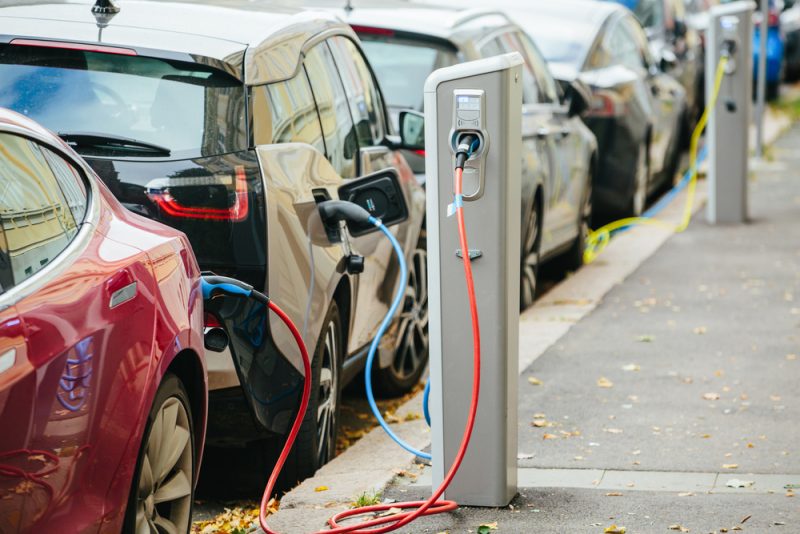Utilities ask Congress to keep electric vehicle tax incentive

A group of the nation’s largest electric utilities has asked Congress to preserve a tax incentive to support the continued growth in sales of electric vehicles.
The electric vehicle tax credit was enacted nearly a decade ago amid the global financial crisis in an effort to spur the development of clean energy technologies.
Today, with hundreds of thousands of electric vehicles on the road in the United States, Detroit is approaching the point at which the incentive by law will start to expire.
Utilities on March 13 sent a letter to Congress, siding with the automakers to maintain the tax credit. The utilities’ efforts occur at a time when growth in electric sales is sluggish and electric companies see a possible opportunity to apply the latest battery technology to help serve their customers.
Through the current incentive, consumers can receive a federal tax credit of between $2,500 and $7,500 on the purchase of a plug-in electric vehicle, depending upon the size of the vehicle and its battery capacity. That’s a one-time dollar-for-dollar reduction in the buyer’s overall income tax liability.
The incentive survived the tax reform law enacted in December, despite a move in the House to eliminate it. But now it faces another threat. The incentive, by law, begins to phase out after each manufacturer sells 200,000 electric vehicles.
The U.S. Internal Revenue Service began counting sales in 2010. If auto manufacturers haven’t hit the limit yet, many expect they will reach it this year.
The tax credit is phased out during the year after the manufacturer hits the 200,000-vehicle sales mark. The credit is scaled back first to 50 percent and then 25 percent before expiring.
Encouraging sales of electric vehicles not only supports the auto industry and helps to reduce air emissions, but it provides a boost to electric companies whose services are needed to charge the vehicles.
“The EV credit is essential to foster the rapid adoption and deployment of electric vehicles, which in turn will boost our economic and national security and continue to create the next generation of well-paying American jobs,” the letter said.
More electric vehicles means more need for power plants to stay in business and produce electricity. But electric companies make money not only on the power they generate. They also earn a return on the poles, wires and other equipment needed to deliver electricity to homes, businesses and communities.
An electric vehicle while it’s charging can increase a home’s demand for electricity by 50 percent or more. So as neighborhoods become home to increasing numbers of electric vehicles, system planners expect there will be a huge need to upgrade local distribution systems to avoid overloads.
This will be especially critical in areas where multiple neighbors may have electric vehicles charging from the same transformer and during the hottest times of the year when air conditioners also are drawing on the system.
This translates into a need for improvements to accommodate the peak demand. For utilities, each capital improvement represents an opportunity to earn a return on investment.
Growth in electricity demand, historically, has been driven by economic activity and increasing energy efficiency, according to the U.S. Energy Information Administration. Growth was especially sharp in the 1950s through the 1970s as air conditioners and other electric appliances spread throughout the nation.
But in the last decade, growth has stagnated as the nation has become more energy efficient. Growth was negative in 2017 but it is projected to rise gradually to nearly 1 percent by 2050.
Electric companies also see potential for a huge fleet of battery-powered vehicles – many of which would sit idle while they’re plugged in during the day – in helping to support the electric system as operators continuously call on resources throughout the day to balance supply and demand.
Vehicles could charge up at night while the demand for electricity is down and the price is low. And then, they could be called upon to discharge energy during peak times of the day while the price is high, offering rewards to their owners.
“We look forward to a time when EVs may help support grid services, the integration of renewable resources or demand response, thereby enhancing the efficiency of the electric grid,” the utilities said in their letter to congressional leaders.
The incentive is powerful, especially for vehicles that sell at a premium above their gasoline-powered counterparts. Industry leaders fear that if the financial incentive is phased out, electric vehicle sales could slow the industry’s growth just as it is gaining momentum.
“These automakers created thousands of American EV jobs by making early investments in EV research and development, manufacturing capacity and charging infrastructure,” the letter said.
“Maintaining the current cap will raise the cost to consumers for certain vehicles, skewing car choices and sales just at the time when electric vehicle sales are beginning to climb and choices are expanding,” the letter added.
The group of 36 utilities who signed onto the letter included some of the biggest names in the industry including Eversource Energy, American Electric Power, Florida Power & Light, Pacific Gas & Electric, Southern Company and the Edison Electric Institute, which represents the nations shareholder owned electric utilities.
